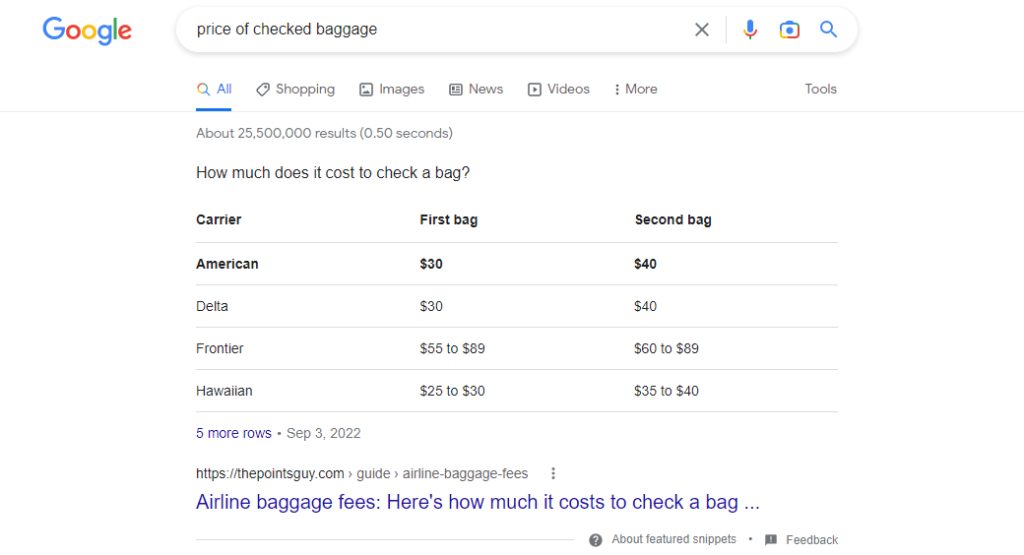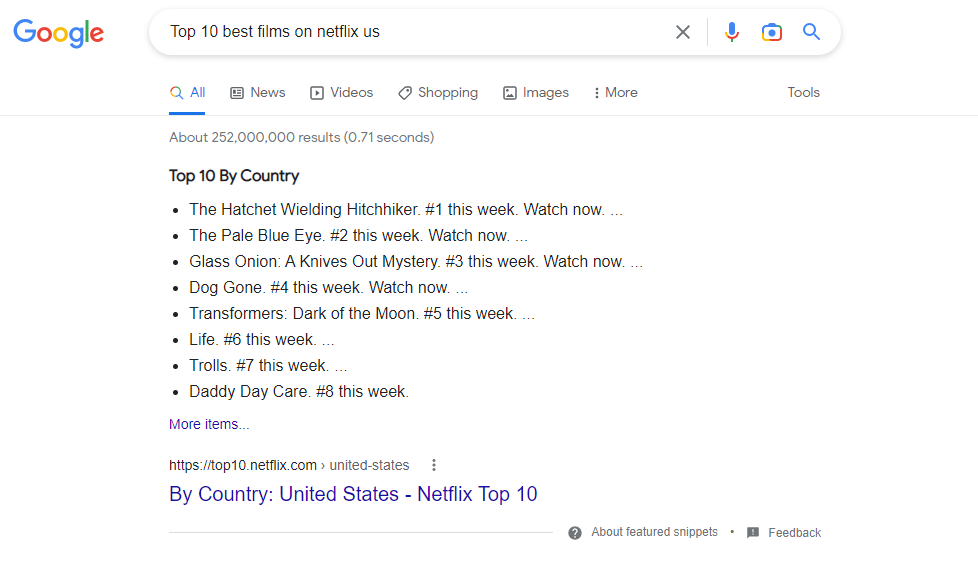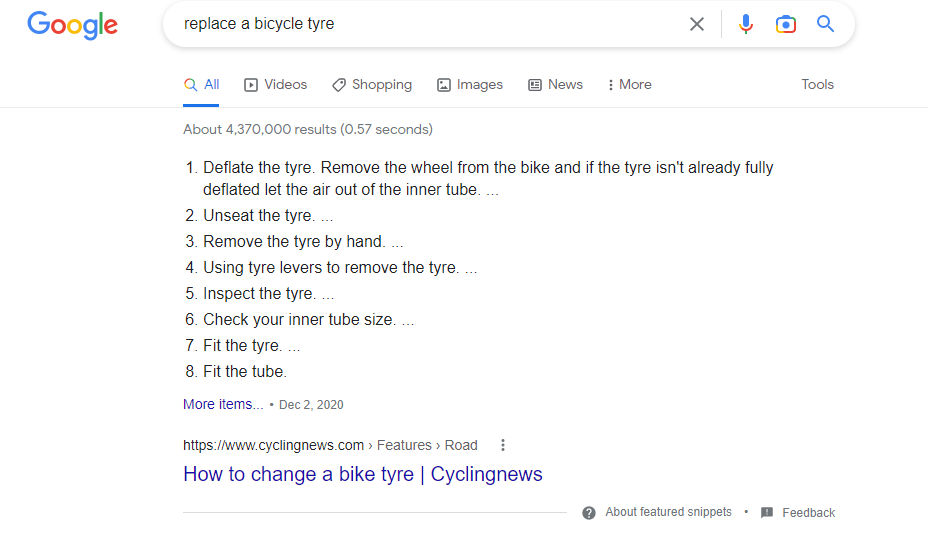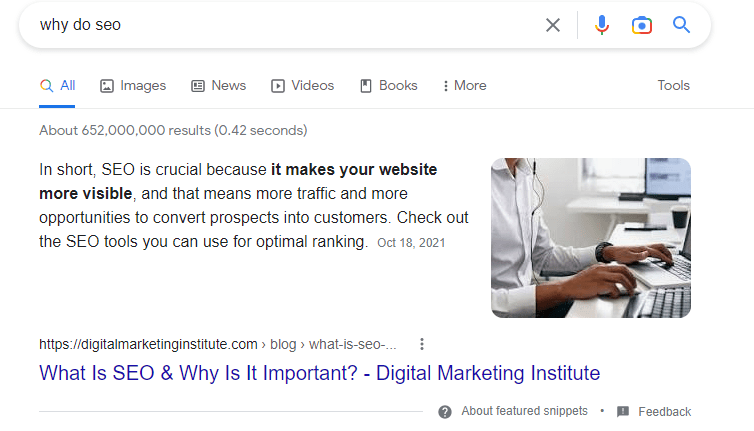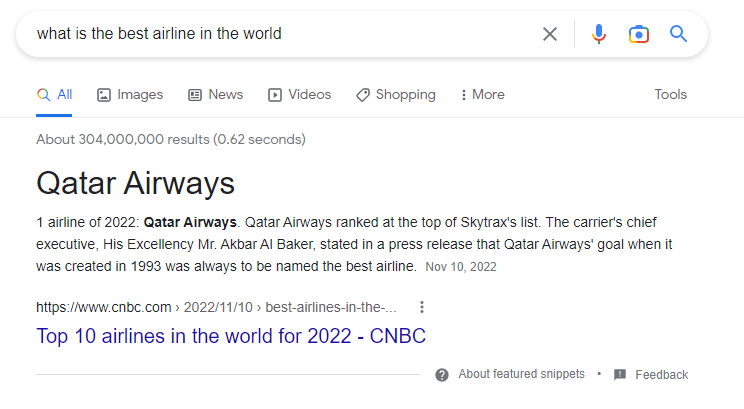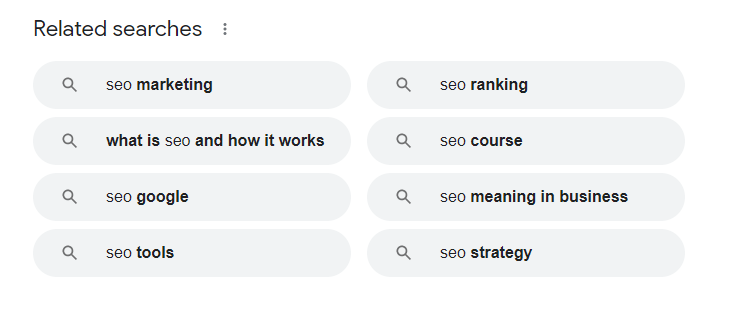Google Position Zero has been around for almost 5 years now. However, some people still have doubts about the usefulness of such a position in the results of the world’s most famous search engine. Constantly evolving since their launch, this type of enhanced results offers users a unique search experience.
A trend that tends to continue, especially through SXO: this hybrid optimization between user experience (UX) and search engine optimization (SEO).
It is therefore in your best interest to know the techniques to rank on this position for your website!
Keyweo explains what Position Zero is and what techniques are needed to reach it.
What is Position Zero?
Position zero is a simple and direct answer to the query that a user has used in a search engine. Position zero is displayed directly in the results page (SERP), without the need for the user to click on the title or URL of the page from which the displayed answer is extracted.
It is also called “Answer Box” or “Featured Snippet”.
This corresponds precisely to an extract of content present on a page that is typically already well-positioned on Google
Position 0 is so called simply because it is the highest result in the natural search results
What does a Featured Snippet look like?
The Featured Snippet can be a paragraph of text, a table, or a bulleted / numbered list. It is often accompanied by media such as a video or image.
Here is an example of a Position 0 in text form.
Here we have typed ” position zero ” into Google, which offers us a concise and brief definition of the term.
Here, the Position 0 result displayed is a table corresponding to a tariff scale.
The following Position 0 provides a bulleted list or bullet points of a Top 10.
Finally, the following extract corresponds to different stages of a tutorial, numbered from 1 to 4.
To find out more about the extract that is offered, it is possible to click on the title of the page or in some cases on “More…”. This means that Google only displays part of the overall content that may be of interest to the user in response to their query.
Achieving a Zero Position: The 5 Commandments
- Choose the right opportunity
- You will ask a simple question
- Express yourself clearly
- Choose the right keywords
- To the related questions you will answer
1. Analyse the opportunities available to you
Before embarking on the creation of content with a view to obtaining Position Zero, you should first understand its benefits to your website.
Aiming for Position 0 is not necessarily useful or at least a priority depending on your sector of activity.
So step back from your market and consider whether there are questions that you can answer in a way that is useful to the user.
This may be the case, for example, if your industry has specific terms that require definitions. It is also the case if your field of expertise allows you to make useful lists or step-by-step guides to propose to Internet users when faced with a query.
If you tend to offer tables, bulleted lists, or numbered step-by-step guides, then Position 0 may well be a great opportunity for you!
In 2016, STAT conducted a study of 92,000 queries to determine which searches most often lead to a Zero Position.
These included:
– Mathematics
– Time
– Finance
– Conversions
– Status
– Health
– DIY (Do It Yourself)
– Handiwork
– Necessary components
– Subjective queries (Top 10, best, etc.).
2. Asking the right question
To try to appear in Featured Snippet, you can attempt to answer several types of questions.
What?
Generally, the aim is to give a very clear and precise definition of a term or subject. Note that Google has its own “Knowledge Graph”, its own database of knowledge and that it favors the latter for certain types of words. We, therefore, recommend that you try to answer “what is …” if it is a word, subject or concept related to your professional field.
How?
To answer a question starting with “how” correctly, you need to detail the answer in several steps or give an exact formula. If they are too long, Google will only display a part of them to let the user click to find out more. This can be a good way to get people to click on your website. It is known, for example, that in the case of a definition, Internet users tend to stay in the SERPs without needing to click to obtain an answer to their question.
Why?
“Why” questions are quite difficult to target. Answers should be as short and clear as possible, but also unbiased. Check the search volumes around your keyword and don’t hesitate to use a tool such as Answer The Public to find out if people are using the word “why”, and in what context they are doing so. Opt for this type of question if the answer can be objective and unbiased, with a quasi-scientific approach, like an encyclopedia.
What is/are?
“What is” or “what are” are pronouns that allow a multitude of questions. They are useful for both objective and subjective questions.
For example, there are very direct questions, hoping for a single correct answer, such as “what is the best video format for Instagram“, but also more subjective questions such as “what is the best airline in the world”. This is a question that is actually near impossible to answer, as there is no clear-cut right or wrong answer.
We will also think about questions related to Time: when? Places: where? People: who? And Figures: how many? But be careful before you start asking such questions. Google generally uses very reliable sources in its Knowledge Graph (such as Wikipedia, for example) in order to offer the best possible answer to its users.
3. Provide a simple and concise answer
As you know, Internet users are increasingly impatient, and Google has understood this. So there’s no need to beat around the bush: offer a simple and concise answer. This is the very basis of the Featured Snippet concept.
You must adopt a very educational editorial attitude for your text to have a chance of being selected as a featured snippet on Google. Keep your sentences short and to the point. Ideally, your question should be answered in 50 words!
4. Optimise your page with the right keywords
Aiming for the zero position means embarking on the work of an SEO specialist. There is no trick to it: you have to go through keyword research. Like any self-respecting content creator, you can’t start writing a text with a goal such as Position 0 without going through this process!
To choose your keywords, here are the elements you should pay attention to:
- The Search volume: the more your keyword is searched for, the more likely you are to appear in Position 0.
- Queries that are long enough (6 words or more), generally tend to result in a Featured Snippet.
- Although the above-mentioned queries are good for zero positions, don’t neglect more direct and implicit words such as “cause”, “cost”, and “what to do”.
- Think also of action verbs such as “become”, “increase”, “make”, “get”, “learn”…etc.
- The competition: as with any keyword choice, analyze the competition carefully. The tougher it is, the more difficult it will be to get your precious Position Zero. On the other hand, if no one is positioning themselves in Featured Snippet on your query, you have a better chance.
5. Offer rich and complete content
It is not just the answer to a specific question that you need to focus on, but quality content around a specific topic. Your answer should be rich and as complete as possible. Don’t focus on just one question, try to look beyond that to related issues. Because in addition to your Featured Snippet, it is the whole page that Google should consider relevant. Think about the overall quality of your content in its entirety and explore as many avenues as necessary.
Feel free to type the generic keyword you are targeting directly into Google. At the bottom of the page, the search engine offers you a “Related Searches” section. Take advantage of this! If your content does not answer all of these related searches, it is not complete enough.
The Answer The Public tool mentioned above or the Keyword Tool will also allow you to answer related questions, and who knows, maybe even obtain other Position Zeros!
Caution: advantages and disadvantages of Position 0
Among the advantages of Position 0, it would seem that it can significantly increase traffic on its website. According to Moz, obtaining Position 0 could generate a boost in the number of clicks with a CTR increasing by more than 100%!
Note also that the answer obtaining a Position 0 is the answer read to Internet users in the case of a voice search. As we know, voice searches have been on the rise in recent years and this trend is likely to continue in the future.
However, there are disadvantages to obtaining a Featured Snippet. These snippets are part of the new 0-click trend.
Although in most cases a 0-Position helps to improve the click-through rate on one’s site, it is also possible that your answer is so well done that the user does not even need to click on your page to get more information.
So it’s up to you to subtly invite the click, by arousing the interest of the Google user.
You are now ready to claim a Position 0 on Google! Now that you know what it is and how to try to reach it, you just have to go for it!
Once your content has been posted, you will be able to follow its performance directly from the Google Search Console which will allow you to quickly detect a Position 0 obtained via the tab “Appearances in search results” from the Performance of your site.











